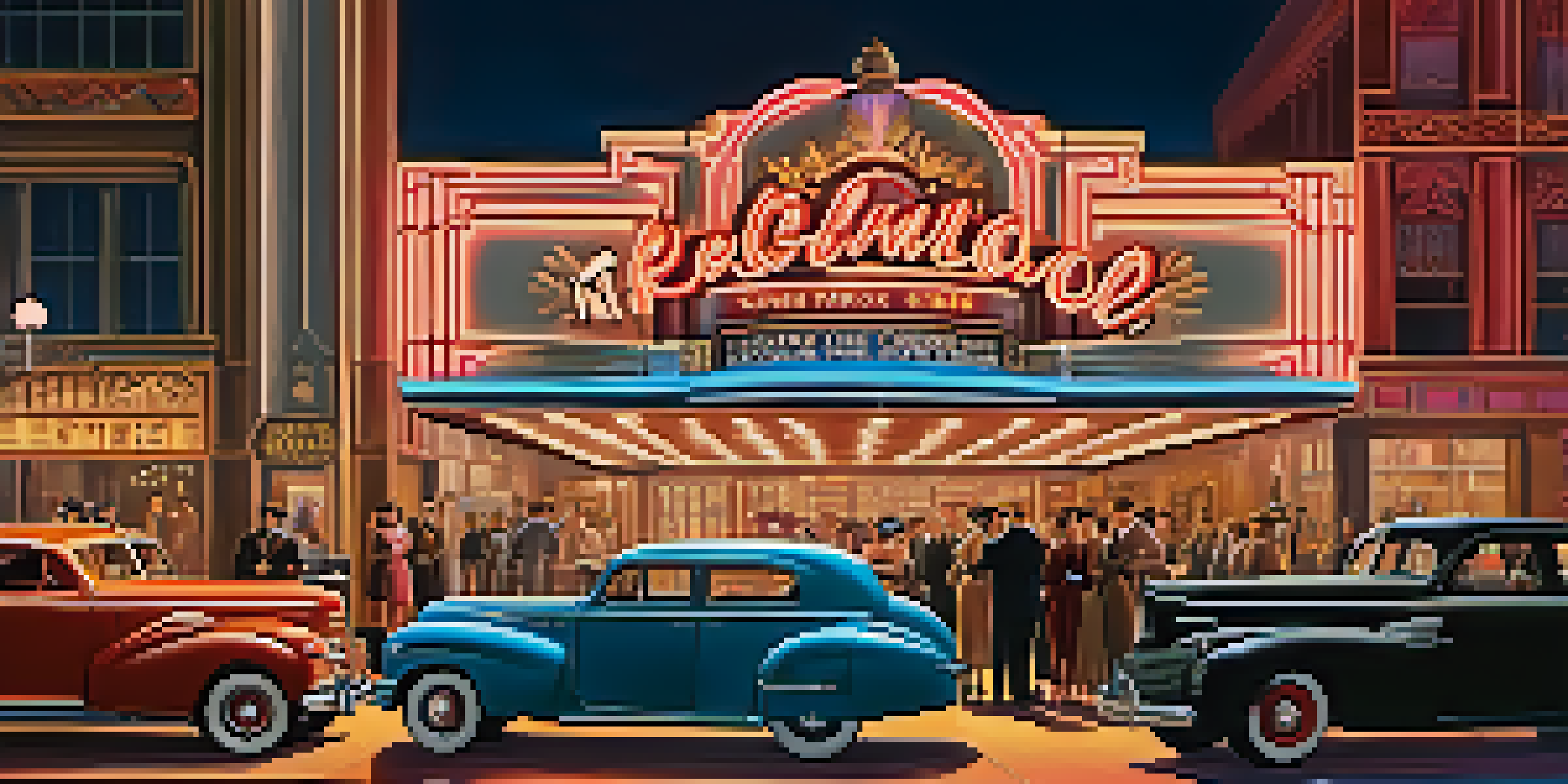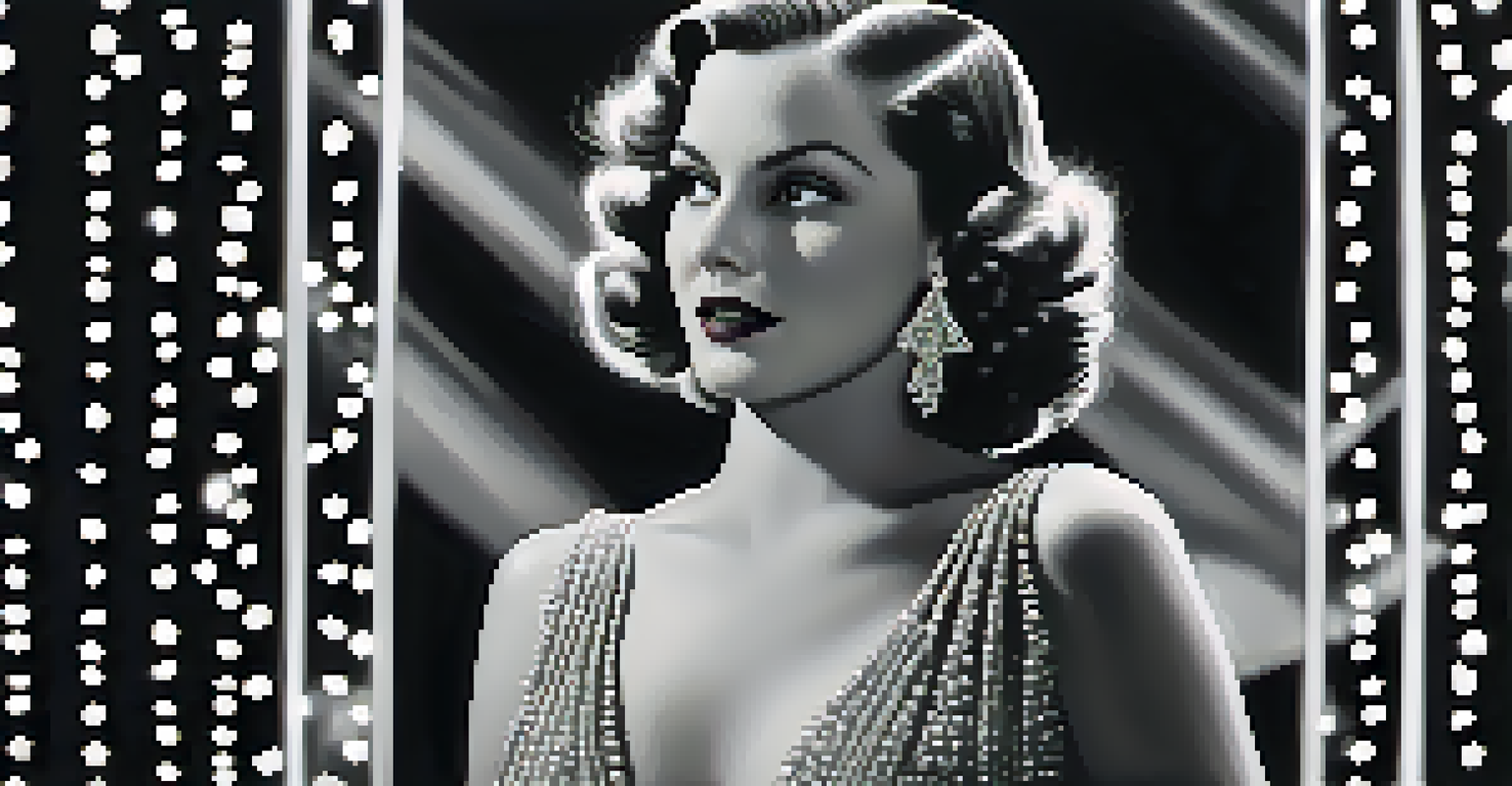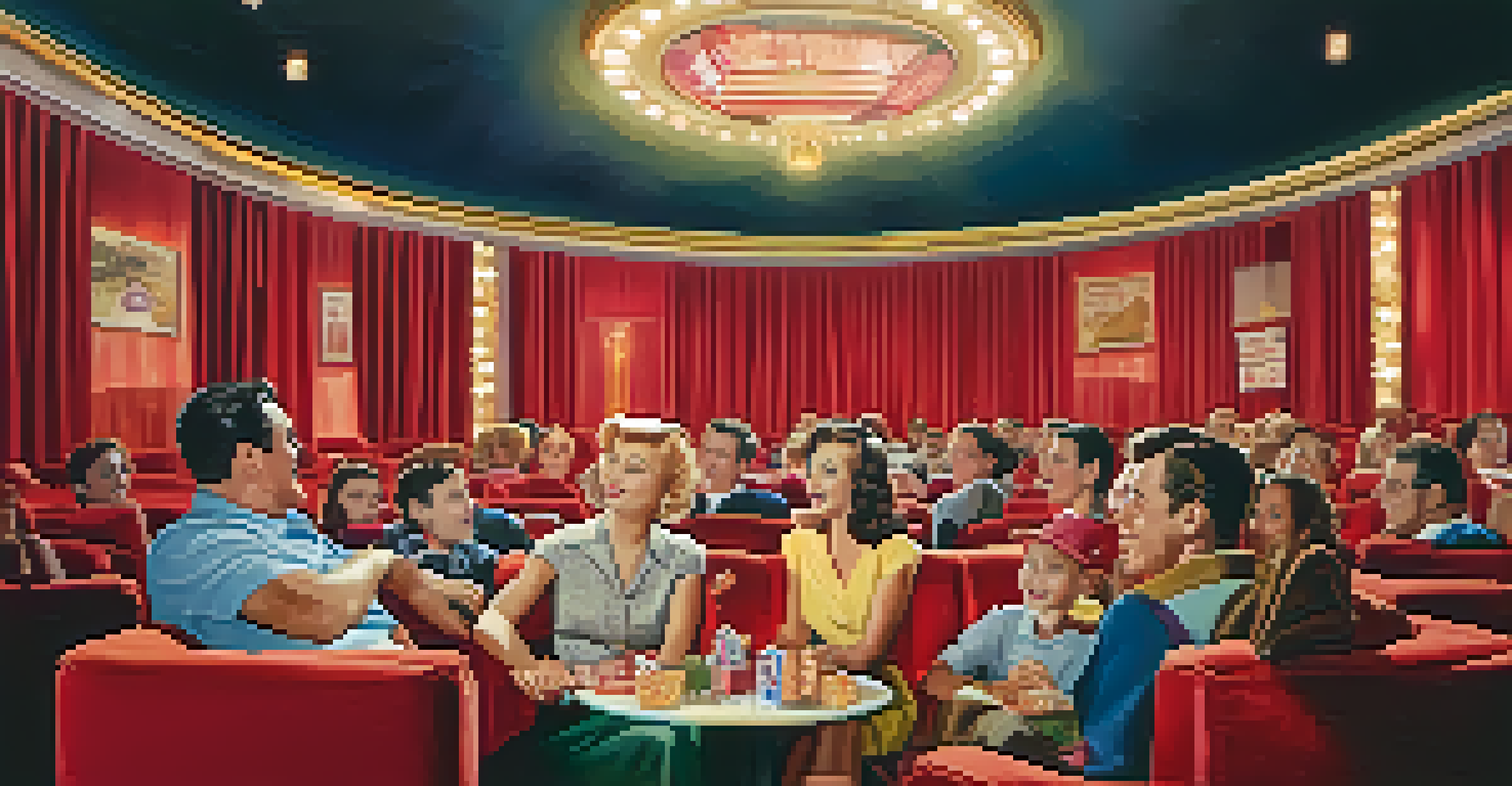Hollywood's Golden Age: Cultural Shifts Reflected in Film

The Birth of Hollywood: A New Era in Entertainment
Hollywood's Golden Age began in the late 1920s, marking a shift in the film industry. This period saw the transition from silent films to 'talkies,' which transformed how stories were told on screen. The allure of the Hollywood lifestyle drew talent and audiences alike, creating a vibrant cultural hub.
Cinema is a matter of what's in the frame and what's out.
As film became a dominant form of entertainment, it also started to reflect the everyday lives of its viewers. Movies began to tackle themes of love, ambition, and social issues, resonating with the public's desires and struggles. The industry's growth paralleled the rise of consumer culture in America.
This era wasn't just about glitz and glamour; it was about connecting with the audience on a deeper level. The films produced during this time laid the groundwork for modern storytelling, emphasizing the importance of character development and emotional engagement.
The Role of Women: Progress and Representation
During Hollywood's Golden Age, women took on significant roles both in front of and behind the camera. Iconic actresses like Katharine Hepburn and Bette Davis challenged traditional gender roles, portraying strong, independent characters. Their performances not only entertained but also inspired audiences to rethink societal norms.

However, while some women achieved stardom, the industry often relegated many to stereotypical roles. This duality highlighted the ongoing struggle for women's rights and representation in media. As audiences began to seek more diverse narratives, filmmakers slowly started to respond.
Hollywood's Cultural Transformation
The transition from silent films to 'talkies' during Hollywood's Golden Age marked a significant shift in storytelling and audience connection.
The impact of these portrayals extended beyond the silver screen, influencing real-world perceptions of women. This era laid the groundwork for future movements advocating for gender equality, showing how cinema could reflect and shape cultural attitudes.
Race and Representation: Breaking Barriers
Hollywood's Golden Age was a complex period regarding race and representation. While films often perpetuated stereotypes, some groundbreaking performances challenged these norms. For example, actors like Paul Robeson and Hattie McDaniel brought visibility to Black talent, paving the way for future generations.
Films are a very powerful force. They can change the way people think and feel.
Despite these strides, systemic racism remained prevalent, limiting opportunities for many minority actors. The industry's reluctance to embrace diversity often resulted in the marginalization of minority stories. However, as audiences began to demand change, filmmakers were pushed to broaden their narratives.
This ongoing struggle for representation in Hollywood highlighted the need for inclusive storytelling. The Golden Age became a pivotal moment, setting the stage for future advancements in diversity within the film industry.
The Impact of the Great Depression on Film Themes
The Great Depression had a profound impact on Hollywood, influencing both production and narrative styles. During a time of economic hardship, audiences sought escapism through film, leading to the rise of musicals and feel-good comedies. These genres provided a much-needed respite from daily struggles.
Filmmakers responded to the climate by incorporating themes of resilience and hope into their stories. Movies like 'It Happened One Night' and 'The Wizard of Oz' offered uplifting messages, reinforcing the idea that brighter days were ahead. This blend of fantasy and realism became a hallmark of the era.
Women in Film: Progress & Struggle
While actresses like Hepburn and Davis broke barriers, many women still faced stereotypical roles, reflecting the ongoing fight for representation.
As the industry adapted to the needs of its viewers, it also laid the groundwork for the evolution of storytelling in cinema. The ability to reflect societal challenges while providing solace became a defining characteristic of films during this time.
Censorship and the Hays Code: A Double-Edged Sword
The Hays Code, established in the 1930s, aimed to regulate content in Hollywood films. While it sought to uphold moral standards, it significantly restricted creative expression, forcing filmmakers to navigate a complex landscape. As a result, many films were stripped of their original messages and grit.
Despite these constraints, filmmakers found innovative ways to convey deeper themes. They often employed subtext and symbolism to bypass censorship, leading to more nuanced storytelling. This challenge fostered a creative spirit that allowed for powerful narratives to emerge, even within the confines of the code.
The Hays Code ultimately shaped the way films were produced and received, highlighting the tension between artistic freedom and societal expectations. This period underscored the importance of balancing creativity with responsibility in the film industry.
The Rise of Film Noir: A Reflection of Societal Unrest
Film noir emerged in the 1940s as a response to the complexities of post-war America. Characterized by its dark themes and morally ambiguous characters, this genre mirrored the anxieties and disillusionment of the time. Films like 'Double Indemnity' and 'The Maltese Falcon' captivated audiences with their gritty realism.
Noir films often explored themes of crime, betrayal, and existential dread, resonating with a society grappling with the aftermath of World War II. The genre became a vehicle for addressing deeper societal issues, reflecting the darker aspects of human nature. This shift in storytelling highlighted the need for authenticity in cinema.
Film Noir: A Reflection of Society
Emerging in the 1940s, film noir encapsulated the anxieties of post-war America, using dark themes to address deeper societal issues.
The impact of film noir on Hollywood was profound, influencing countless filmmakers and genres in the years to come. Its legacy continues to be felt today, as modern cinema frequently revisits these themes, showing how film can evolve while still reflecting societal concerns.
The End of an Era: Transition to Modern Cinema
The Golden Age of Hollywood began to wane in the late 1950s, ushering in a new era of filmmaking. Various factors, including the rise of television and changing audience tastes, contributed to this transition. As viewers sought more authentic and relatable content, the film industry had to adapt or risk obsolescence.
This shift led to the emergence of new filmmakers who challenged traditional narratives and embraced more experimental styles. The rise of independent cinema and the decline of the studio system marked a significant turning point in Hollywood's history. Filmmakers like Martin Scorsese and Francis Ford Coppola pushed boundaries, exploring themes that resonated with a new generation.

While the Golden Age may have ended, its influence is still palpable in modern cinema. The lessons learned during this transformative period continue to shape the industry, reminding us of the power of storytelling and its ability to reflect our evolving cultural landscape.